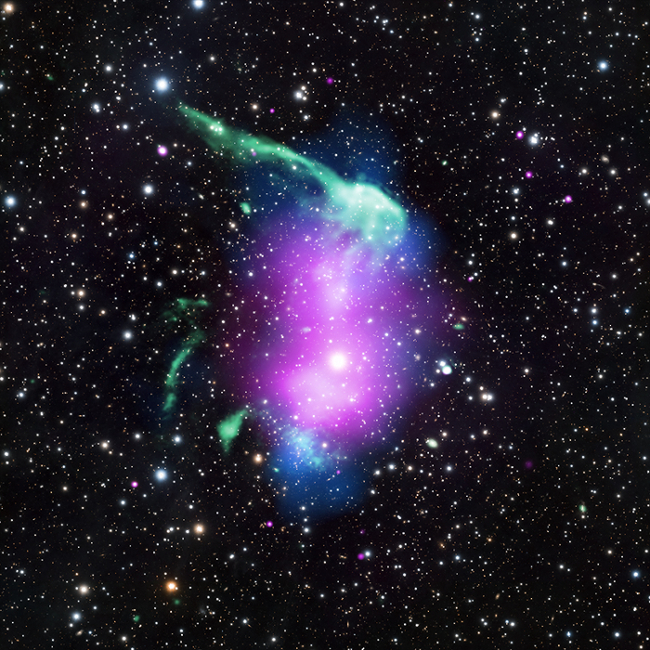
 Credit: NASA/CXC/SAO/R. van Weeren et al; Radio: LOFAR/ASTRON; Optical: NAOJ/Subaru
Credit: NASA/CXC/SAO/R. van Weeren et al; Radio: LOFAR/ASTRON; Optical: NAOJ/Subaru
Relic
Clusters of galaxies help define the observable structure of the Universe. They are believed to be built up slowly, hierarchically over time through collisions and mergers of individual small galaxies. These collisions can be titanic, with enough energy to separate dark matter from visible matter. Some of these collisions produce strange elongated radio structures stretching perpendicular to the symmetry axis of the cluster. These structures are believed to be shock fronts produced by the collisions that help form the cluster. The image above is a composite of radio (in green), optical (white) and X-ray (purple) data of the cluster RX J0603.3+4214, known as the "Toothbrush Cluster" because of the morphology of the radio relic, which stretches over 6 million lightyears. Also shown is a map in blue of the distribution of dark matter in the cluster. Studies of the relation between the matter distribution and the shock fronts defined by the cluster radio relics help astronomers understand the violent merger processes that shape our Universe.
Published: November 7, 2016
<
HEA Dictionary ● Archive
● Search HEAPOW
● Other Languages
● HEAPOW on Facebook
● Download all Images
● Education ● HEAD
>

Each week the HEASARC
brings you new, exciting and beautiful images from X-ray and Gamma ray
astronomy. Check back each week and be sure to check out the HEAPOW archive!
Page Author: Dr. Michael F. Corcoran
Last modified Monday, 26-Feb-2024 17:36:51 EST


